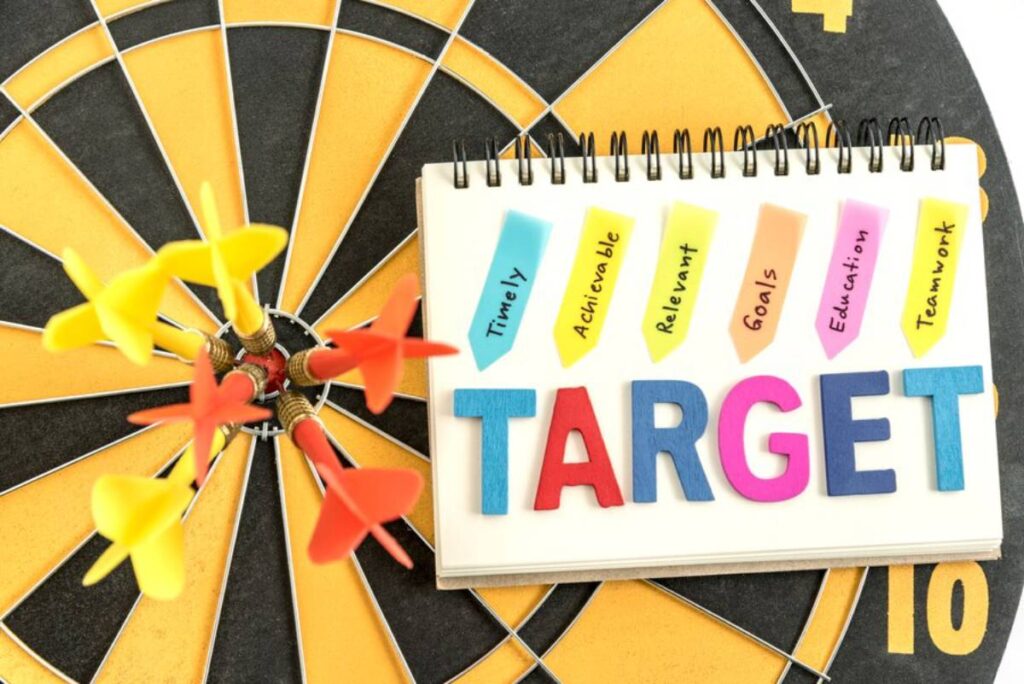The Personal Development Blog

Proven Strategies for Effective Goal Setting
Everyone has aspirations—whether it’s launching a business, running a marathon, or simply being more organised. But without a clear plan, those dreams often remain just that. That’s where effective goal setting strategies come into play. The difference between those who consistently hit their targets and those who don’t often boils down to how well they define, plan, and pursue their goals.
Goals give your efforts direction, structure your time, and provide a sense of purpose. But setting the right goals—and achieving them—requires more than good intentions. In this guide, we’ll explore time-tested methods to help you set powerful goals, overcome obstacles, and stay on track, using practical tools and actionable productivity tips.
Why Goal Setting Matters
Before diving into techniques, let’s clarify why goal setting is so essential:
Key Benefits:
- Focus: Goals filter out distractions and align your energy.
- Motivation: Clear targets keep you moving, especially when progress feels slow.
- Measurement: Goals offer benchmarks to evaluate success.
- Accountability: Written goals make you more likely to follow through.
- Growth: They push you outside your comfort zone, fuelling personal and professional development.
In short, goals help you not only achieve goals—but become the kind of person who achieves consistently.
1. Start with the SMART Framework
One of the most popular and proven goal setting strategies is the SMART framework. It ensures your goals are:
- Specific – Clear and well-defined
- Measurable – Trackable with metrics or milestones
- Achievable – Realistic and within your reach
- Relevant – Aligned with your values or long-term plans
- Time-bound – Set with a clear deadline
Example:
Instead of: “I want to be healthier.”
SMART Goal: “I will jog for 30 minutes, four times a week, for the next two months.”
This transforms a vague desire into a structured, actionable plan.

2. Break Down Big Goals into Smaller Steps
Large goals can feel overwhelming. Breaking them down into smaller, manageable tasks helps reduce anxiety and increases momentum.
Strategy:
- Divide the goal into phases or milestones
- List weekly or daily tasks that contribute to each phase
- Celebrate mini-wins along the way to stay motivated
Productivity tip: Use a goal-tracking app or planner to visualise your progress and maintain consistency.
3. Use the WOOP Method for Visualising Success
The WOOP method (developed by psychologist Gabriele Oettingen) is a science-backed mental strategy that combines visualisation with action planning.
WOOP Stands For:
- Wish – Define what you want to achieve
- Outcome – Visualise the best result
- Obstacle – Identify potential internal or external barriers
- Plan – Create an “If-Then” plan to handle those obstacles
Example:
- Wish: Finish writing my novel this year
- Outcome: A completed manuscript I can submit to publishers
- Obstacle: Losing motivation after work
- Plan: If I feel tired, then I’ll write just 200 words to keep the habit going
This method keeps your goals grounded while preparing you for real-world challenges.
4. Align Goals with Your Values
Goals that align with your deeper values are more fulfilling and sustainable over the long term. When your aims reflect who you are (or want to be), motivation becomes intrinsic—not forced.
Reflect on:
- What excites or energises you?
- Which qualities do you admire in others?
- Where do you want to grow or contribute?
Tip: Before setting a goal, ask: “Does this reflect the person I want to become?”
5. Focus on Process, Not Just Outcomes
While it’s tempting to fixate on the end result, long-term success depends on systems and habits—the process you follow every day.
Reframe:
- Instead of: “I want to lose 10kg.”
- Try: “I’ll walk 10,000 steps a day and eat balanced meals.”
Process-focused goals build discipline and consistency—two of the most underrated productivity tips for any area of life.
6. Apply the 80/20 Rule (Pareto Principle)
The 80/20 rule suggests that 80% of your results come from 20% of your efforts. Identifying and focusing on that vital 20% can drastically accelerate your progress.
How to Apply It:
- Identify the most impactful actions in your goal pursuit
- Eliminate or delegate low-value tasks
- Schedule your best energy for high-leverage activities

7. Time-Block for Goal-Centric Work
Time-blocking is a powerful productivity tip that helps protect your most valuable resource: your attention.
How It Works:
- Divide your day into dedicated blocks for specific tasks
- Allocate non-negotiable time to work on your goals
- Avoid multi-tasking during these blocks
Tool: Google Calendar, Notion, or a paper planner all work well for time-blocking.
Pro Tip: Schedule goal-related work during your peak energy hours for maximum effectiveness.
8. Track Progress and Adjust as Needed
Measuring your progress helps maintain motivation and ensures you’re heading in the right direction. However, flexibility is also key—life happens, and sometimes your goals will need to shift.
Try:
- Weekly reviews to reflect on wins and setbacks
- Monthly assessments to recalibrate or refine goals
- Journaling to track mindset, habits, and insights
Remember: It’s better to adjust the path than abandon the destination.
9. Build Accountability
Accountability significantly boosts your chances of success. It transforms intentions into commitments.
Strategies:
- Share your goal with a friend, coach, or online group
- Use apps like Habitica, StickK, or Coach.me for built-in accountability
- Set up a reward system or consequences to stay on track
Knowing someone else is watching—even passively—can add just enough pressure to help you follow through.
10. Celebrate Milestones, Not Just Completion
Celebrating the small victories along the way keeps morale high and reinforces positive behaviour.
Examples:
- Finished your first week of workouts? Treat yourself to a new playlist.
- Reached the halfway point of your course? Celebrate with a night off or your favourite meal.
Key Insight: Acknowledging progress builds confidence and emotional momentum to keep pushing forward.

Common Goal-Setting Mistakes (And How to Avoid Them)
Even with the best intentions, many people fall into the same traps. Here’s how to sidestep them:
| Mistake | Solution |
|---|---|
| Setting vague or unrealistic goals | Use SMART criteria |
| Focusing only on the end result | Emphasize daily systems and routines |
| Overcommitting | Limit yourself to 1–3 goals at a time |
| Not tracking progress | Use journals, trackers, or apps |
| Ignoring mental roadblocks | Apply mindset tools like WOOP or affirmations |
Recognising these missteps early can help you correct course before losing momentum.
Real-Life Application: Goal Setting in Different Contexts
Career:
- SMART goal: “Increase my public speaking confidence by delivering one internal presentation every month for the next six months.”
Health:
- Process goal: “Meal prep every Sunday for the upcoming week.”
Financial:
- Milestone goal: “Save £5,000 in six months by setting up automatic transfers and cutting discretionary spending.”
Learning:
- Habit goal: “Read 10 pages of a non-fiction book every morning before work.”
Each of these combines clarity, intention, and consistency—the cornerstone of great goal setting strategies.
Turn Your Intentions Into Action
Effective goal setting isn’t about lofty aspirations—it’s about designing a life with clarity, focus, and direction. Whether your dream is to run a business, write a book, or simply become more organised, the right strategy transforms ambition into achievement.
With SMART goals, a focus on process, consistent tracking, and accountability, you can confidently navigate challenges and steadily achieve goals that once felt out of reach.
Take action today: Choose one area of your life to apply these goal setting strategies. Define it clearly, break it down, commit to the process, and watch how even small daily wins add up to lifelong success.









